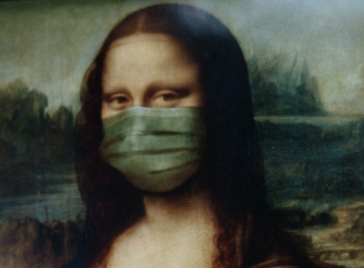Museums in Europe reopen with new rules and regulations

PHOTO BY COTTONBRO OBTAINED THROUGH PEXELS
According to director Gordon Freiherr von Godin of DDR, their daily visitors dropped from 2,000 to fewer than 50 because of social distancing guidelines and interactive concept.
June 12, 2020
When Eli Gericke, one of the first visitors of the Berlinische Galerie museum in Berlin, Germany, stepped through their doors on the 11th of May, she felt restricted by the museum’s new rules and regulations.
“You can’t relax when you look at the images, you can’t breathe,” Gericke said in an interview with The New York Times. “It’s not the same as before.”
According to the Berlinische Galerie’s new rules, visitors must wear a mask and always stay at least five feet apart from each other.
Several European countries have begun reopening their museums, with Germany being one of the first. Museums in Berlin were given permission to open up on May 4.
According to The New York Times, each museum’s safety plans are different. The institutions making up the Royal Museums of Fine Arts in Brussels, Belgium, require any person over the age of 12 to wear a government-issued facemask. Meanwhile, a writer for The Times, Thomas Rogers, finds that the ticketing booths are now virtual and signs have been put up to direct pedestrians to stay at least 5 feet apart. In addition, the Deutsche Demokratische Republik (DDR) museum has installed hand sanitizer stations all over its rooms.
Now the question is: With all these added precautions, is it actually worth the risk for these museums to be opening up?
Freshman Timothy Wilburn of Freehold believes that based on the current situation, it is not an appropriate time for museums to open up, since they’re not essential businesses. However, he still wants people to enjoy their art.
“Based on the current situation, I don’t think it’s an appropriate time to reopen places like museums since they’re not essential,” Wilburn said. “ I believe that museums should be reopened at some point, although changes would be difficult to handle at first,”
Museums, like the DDR in Berlin, are solely based on an interactive concept, and are having a harder time reopening. The museum’s slogan, “History you can touch,” is not the best selling phrase in a time like this.
Sophomore Hannah Schwartzberg of Ocean agrees with Wilburn, and is unsure of how the overall experience would be.
“I understand people’s want to see art in person, let alone see anything in person, but I don’t even think the experience would be that enjoyable,” Schwartzberg said.
“Museums are like parks; spaces in which the individual experience can intertwine with the public space of being together. In the coming months, as a society, we face the challenge to find a new, positive balance between personal freedom and care for our relationship with others,” said Bart De Baere, the director of the Museum of Contemporary Art Antwerp in an interview with the Art Newspaper.
De Baere is trying his best to help people reconnect with the joys of the art that their museums bring, but with all the added restrictions the experience is altered.
On the other hand, people such as Katrin Neuburger, another one of the first guests at the Berlinische, saw that the new awareness people take to their surroundings adds to a more focused experience. “These days, you feel like everything is slowing down generally, anyway,” Neuburger said to the New York Times, “But it’s actually kind of nice.”



